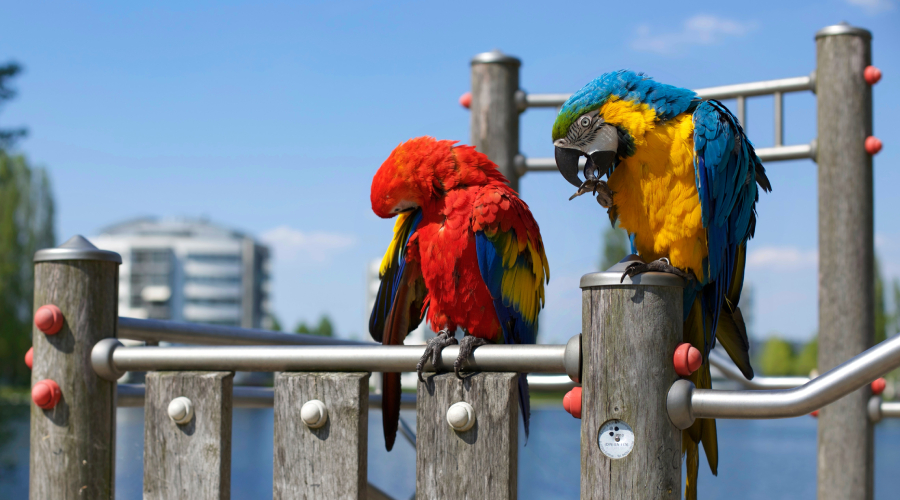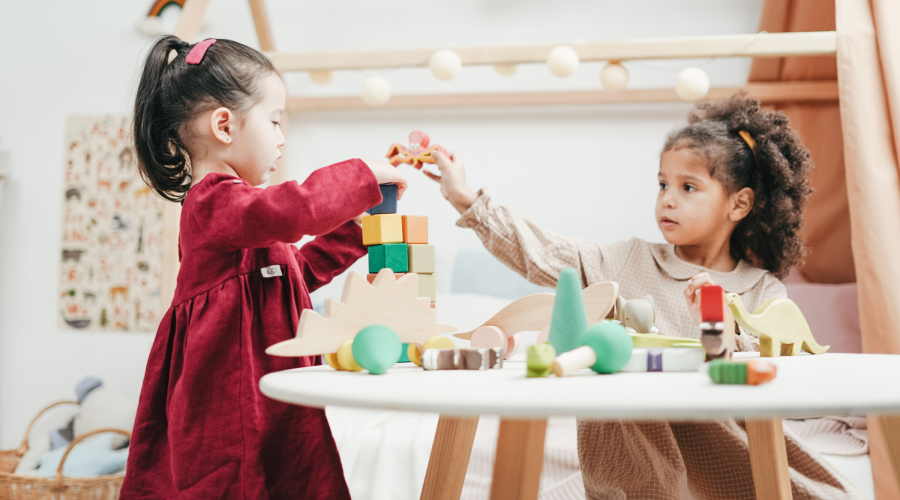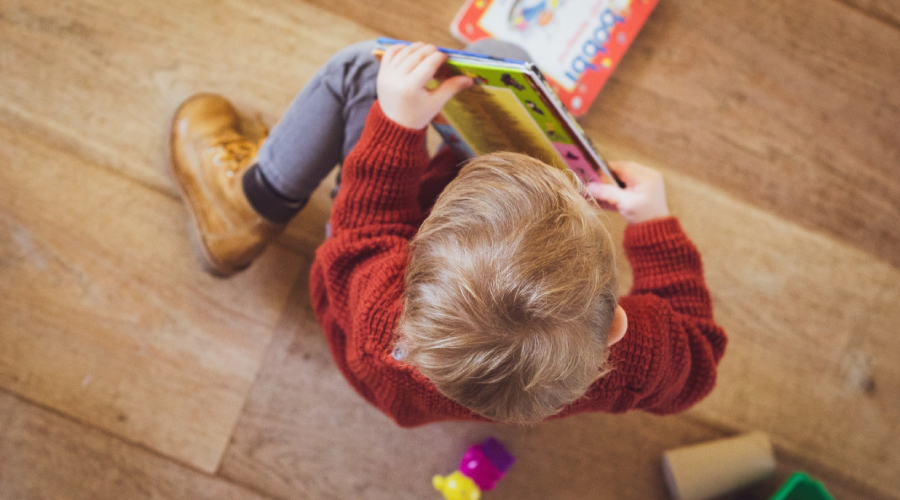settings
children
With Famly since
What can birds teach us about diversity?
It’s all about how you frame it.
This year, I worked with educators at a child care setting in Minnesota to see how they could explore diversity across their whole practice. They talked with the children about the birds they saw in the playground — they noticed birds’ different sizes and feathers of different colors. They discussed how people have different sizes and skin colors, too. In this way, diversity became a natural item of curiosity for children — and they learned to explore and appreciate it in their own lives.
If we treat diversity as a curriculum item by itself, it exists in a bubble. That makes it harder for children to notice and appreciate diversity in their own lives.
As Early Years educators, we’ve got a critical role to play in this process, but the way we teach diversity matters. In this article, I want to explore how you can weave themes of diversity throughout your daily practice, in ways that are real and meaningful to children’s own experiences.
This way, you’ll give children the foundations to practice tolerance and celebrate diversity in every corner of their lives.
The big ideas
Many dimensions of diversity
Diversity isn’t just about race and ethnicity. As you develop new ways to explore diversity in your early years classroom, keep in mind all the other different factors that define diversity:
- Age
- Education
- Family structure
- Gender identity
- Cultural background and home language
- Mental ability
- Physical ability
- Neurodiversity
- Religion
- Sexual orientation
- Socioeconomic status
If you take a moment to think about it, you’ll find that all of these factors shape who you are, and how you interact with others. Now, think of all the ways these factors will vary among the families and children in your care. As an educator, you can help shape children’s core impressions of what diversity really means.

Defining curriculum with a diversity-rich lens
Educators who teach with a diversity-rich lens don’t impose a concrete idea of diversity, but work to help children notice it in the ways that mean the most to them.
Picking up on the vignette about birds, you can see how neutral vocabulary (birds, feathers, nest, migrate, colors) become tools for children to see diversity in their lives:
This morning I saw three birds on my way to school. My uncle has a bird’s nest at his house. Our family used to live in Costa Rica, but my grandpa says we migrated. Birds have feathers of different colors, my friend Tomas and I have skin of different colors.
In this model, children’s own diversity of thinking and experiences is infused into the subject.
If we look at an Early Years setting, here are some of the most important ways we see this broad approach to diversity in daily practice:
- Educators invite children — and their families — to share their ideas and express their opinions.
- Children are curious about their own identity and others, and how we all play and work together.
- Children see themselves and their families reflected in the curriculum, and can draw parallels to their own personal lives.
- Children feel able to ask questions about diversity and identity to adults, and adults feel comfortable answering these questions in thoughtful, honest ways.

Practical applications to infuse diversity into your child care setting
So how do you put all this in motion? Here are some simple everyday ways to explore diversity in your child care setting.
Post pictures of the children and their families at eye level.
Ask families to bring pictures so children can notice the diversity of families. Matthew has two dads, Elena has a mom and a dad, and three brothers, Alex’s grandfather is in a wheelchair. This strategy is more organic than putting up posters about diversity from some catalog.
Plus, remember to change the pictures as you change themes. For example, on the topic of “birds”, children might bring pictures of birds from their home countries, or a favorite family bird. The objective is to promote conversation that builds knowledge and vocabulary.
Use the K-W-L format to lead large group and small group discussions.
KWL is simple: It’s about what we Know, what we Want to know, what we have Learned. You can use this when you’re working through new subjects in your setting, to help engage children with the knowledge they’re most curious about. Plus, as an educator, it gives you insight on the children’s prior knowledge and interests. When you help guide your learning with KWL, you can design activities that best reflect the diversity of perspectives. You can visit Bright Hub Education to learn more about how a KWL chart works in your Early Years setting.
Choose materials and toys that avoid stereotypes.
It’s tempting to purchase the “ethnic foods” kit from the catalog for the play kitchen area — but the children lead actual lives with real food. Let them introduce the kinds of foods they eat at home with cans or wrappers, or copies of recipes from their families. You could talk about how the recipes for rice are different, but just as tasty in Japan and in Mexico. And also, that it is OK to prefer one over the other if that’s what we are used to.
The big idea here is to look for ways for children to bring their home experiences into the classroom — it’s more personal and meaningful than diving into materials or equipment from someone else’s catalog.
Be intentional in finding books that describe the lives of all your children and families.
Books are educators’ best tools to address diversity. During a curriculum unit on families, ensure that the books you read include all the family structures in your group of children. Especially if you have LGBTQ families, you should read stories like Mommy, Mama, and Me, or Daddy, Papa, and Me, to help all your children think about the different ways that families can be. Books give you the words to describe all families in a matter-of-fact, caring way, and to honor every child’s own experiences.
Have books that describe the worlds beyond the children’s worlds, too.
Books should reflect the diversity of life, even when (and perhaps especially when) the composition of your child care setting might seem homogeneous. Teaching for Change is a great resource to find books and materials that introduce diverse identities and perspectives.
Honor children’s home languages.
If you have children who are learning English, take time to explore new vocabulary in their home languages too. Birds are ‘pajaros’ in Spanish, ‘shimbiro’ in Somali, and ‘oiseaux’ in French. This respects the culture of the multilingual children, and it opens up the awareness of the monolingual English-speaking children.

Grow in your practice
You may be new at this way of planning curriculum, and wondering how to continue to grow in your practice. Any starting point is good — and if you’re looking for new direction, you’ll find excellent resources through the National Association for the Education of Young Children (NAEYC) and Teaching for Change.
Keeping a diversity lens becomes easier over time. If it feels unfamiliar at first, you’ll get more comfortable with it as you notice children commenting on each others’ differences in positive ways, and exploring diversity as they find it in their lives.
Children don’t live in a bubble of their family or child care center — but the interactions they have their shape their actions and experiences in the wider world. By teaching this more integrated idea of diversity, you’re giving children a strong sense of who they are, and you’re teaching them to understand and respect others. This is an important foundation for tolerance and social justice — you are preparing children for life.
Angèle Sancho Passe is an early education consultant , trainer, and writer based in Minneapolis, Minnesota. Her latest book is titled “Creating Diversity-Rich Environments for Young Children”. You can learn more at www.angelesanchopasse.com
Top tips from Reynolda Preschool
Get top tips from a preschool just like yours. Hear from Reynolda Preschool on why and how they use Famly - and why they’ve never looked back.
Read their story









